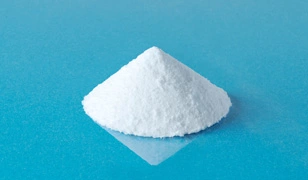IUPAC Name
(2S)-2,6-Diaminohexanoic Acid Hydrochloride
Cas Number
657-27-2
HS Code
2922.41.00
Formula
C6H15ClN2O2
Industry
Animal Feed
Appearance
White Crystalline Powder
Common Names
Darvyl;Lyamine;Monohydrochloride,L-Lysin;(S)-(+)-Lysine Hydrochloride;L(+)-2,6-Diaminohexanoic Acid, Hydrochloride;L-(+)-2,6-Diamino-N-Caproic Acid Monohydrochloride;L(+)-2,6-Diaminocaproic Acid, Hydrochloride;L-Lys HCl;2,6-Diaminohexanoic acid hydrochlor
Packaging
25 Kg Bag
Lysine belongs to the group of essential limiting amino acids. It is found in all of the proteins but vegetable proteins contain its small amounts, thus feed mixtures are often poor in it. Lysine deficiency in the body is caused by poultry diets that consist mainly of cereals, sunflower meal and minor amounts (1–2 %) of animal feed. It contains two amino groups and one carboxyl group, therefore it has basic properties. Lysine is a component of proteins.
It is necessary for poultry for the regulation of nitrogen and carbohydrate metabolism, as well as for the synthesis of nucleotides and chromoproteins, it promotes intensive growth of younger animals, intensive use of feed, and melanin pigment formation in poultry feathers; lysine affects formation of erythrocytes and calcium deposition in bones, is involved in redox reactions, activates transamination and deamination of amino acids, facilitates calcium and phosphorus absorption.
Lysine is an amino acid of the second priority in poultry requiring methionine for the feather protein formation. Wheat, barley, and corn and sunflower diets are almost always poor in lysine.
L-Lysine is primarily generated through fermentation employing Corynebacteria strains, notably Corynebacterium glutamicum. This involves a complex series of steps such as fermentation, separating cells through centrifugation or ultra-filtration, isolating and purifying the product, followed by evaporation and drying.
Lysine belongs to the group of essential limiting amino acids. It is found in all of the proteins but vegetable proteins contain its small amounts, thus feed mixtures are often poor in it. Lysine deficiency in the body is caused by poultry diets that consist mainly of cereals, sunflower meal and minor amounts (1–2 %) of animal feed. It contains two amino groups and one carboxyl group, therefore it has basic properties. Lysine is a component of proteins.
It is necessary for poultry for the regulation of nitrogen and carbohydrate metabolism, as well as for the synthesis of nucleotides and chromoproteins, it promotes intensive growth of younger animals, intensive use of feed, and melanin pigment formation in poultry feathers; lysine affects formation of erythrocytes and calcium deposition in bones, is involved in redox reactions, activates transamination and deamination of amino acids, facilitates calcium and phosphorus absorption.
Lysine is an amino acid of the second priority in poultry requiring methionine for the feather protein formation. Wheat, barley, and corn and sunflower diets are almost always poor in lysine.
L-Lysine is primarily generated through fermentation employing Corynebacteria strains, notably Corynebacterium glutamicum. This involves a complex series of steps such as fermentation, separating cells through centrifugation or ultra-filtration, isolating and purifying the product, followed by evaporation and drying.
